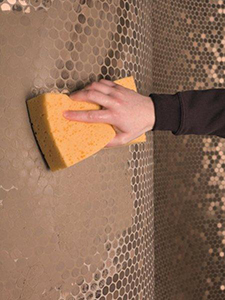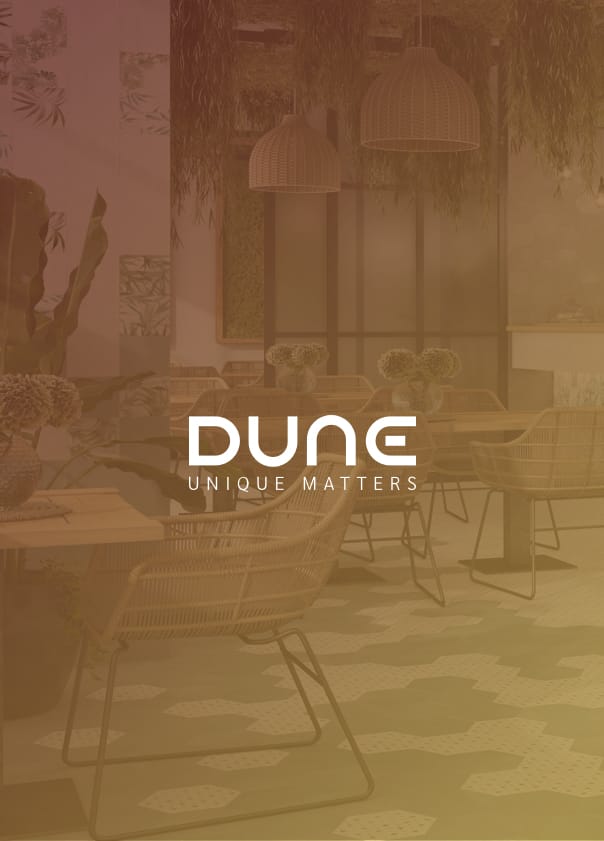1. PROPER PREPARATION OF SURFACE
The wall must be firm, levelled, dry and clean. Uneven surfaces greater than 2 mm must be levelled with specific products. All cracks and imperfections should be repaired, so that the wall is completely smooth. The moisture content of the surface must be under 2%.
2. INSTALLATION MATERIAL
For a correct installation, several factors must be taken into account: Material kind of the wall to be tiled (synthetic pannels, plaster, wood, etc.), wall stability, environmental conditions, kind of surface to be covered , speed of carrying the work, etc. All the above parameters determine the choice of the adhesive kind.
All the adhesive materials recommended by DUNE have been previously tested in our facilities, in controlled environmental conditions and on rigid brick and/or concrete walls. Under different conditions from the above mentioned, it is recommended to test firstly and if in doubt, please contact DUNE or the adhesive distributor.
DUNE always recommends to test first the material with minimum two pieces before placing all the material.
Make sure that the chosen adhesive is apt for the material to be installed.
DUNE recommends:
– Mosaics with ceramic support and metal coated: use C1 cement based, C2 cement based or epoxy adhesive. (SIRENA COPPER, SIRENA GOLD, REFLECTIONS, METALIC SILVER, METALIC GOLD, BRONZO, ETERNAL, HYPNOTIC, MATRIX, URBAN)
– Metal mosaics: use C2 cement based or epoxy adhesive (CORTEN, HALLEY SILVER and HALLEY GOLD)
3. INSTALLATION
We recommend starting the installation from the floor to the ceiling, continue in phase to allow the adhesive the necessary time to get dry. This will avoid vertical displacements. Extend a thin layer of adhesive on to the surface where the piece will be installed (3mm approx.) Then, use a notched trowel no. 3 to make incisions into the adhesive layer.
Place the piece while the adhesive is still soft and before a dry layer of film forms on the adhesive surface. Once the piece is placed, press carefully to obtain a correct adhesion and to cover possible areas without adhesive.
Important: make sure that the distance between one sheet and another is the same as the one among the components so that all the joints look alike. For irregular mosaics, we recommend pulling out some components and relocating them in the joint between two sheets. This will improve the finish of the mosaic.
CUTTING
All the metal mosaics can be cut using a metal radial disk. We recommend continuous rim disks.
4. GROUTING
All joints must be perfectly clean and dry and having a minimum depth of 2mm. Use a flat rubber trowel to spread the paste, being sure that the joints are completely covered. Use a wet sponge or neutral PH products – never abrasive products – to wash off immediately the excess of grouting paste from the surface before it dries.
For better waterproofing, we recommend an epoxy grouting paste, especially in water areas.
Consult the grouting materials table.
Important:The colour of the grouting paste might change the product’s appearance. We recommend to test with some pieces before grouting the entire surface.
All the metal mosaics have a low resistance to scratching. For a proper finish, use a fine grouting material. Excess of grout must be immediately cleaned with a sponge and water, avoiding excessive pressure. Be especially careful as it is at this stage of the installation when scratching is more frequent.
Important: we recommend a test of grouting in one piece BEFORE grouting the whole surface.
Use a damp sponge and clean water to wash off the excess of grouting paste from the surface. It is very important to do this before the paste dries. If this happens, use a cement remover to clean the surface.(not apt for stone)
5. CLEANING AND MAINTENANCE
For everyday cleaning, use regular pH neutral cleaners. Do not use abrasive products.
For metal mosaics, use product for daily cleaning of metals. Never use rust cleaners because it alters the surface finish of the part.


















